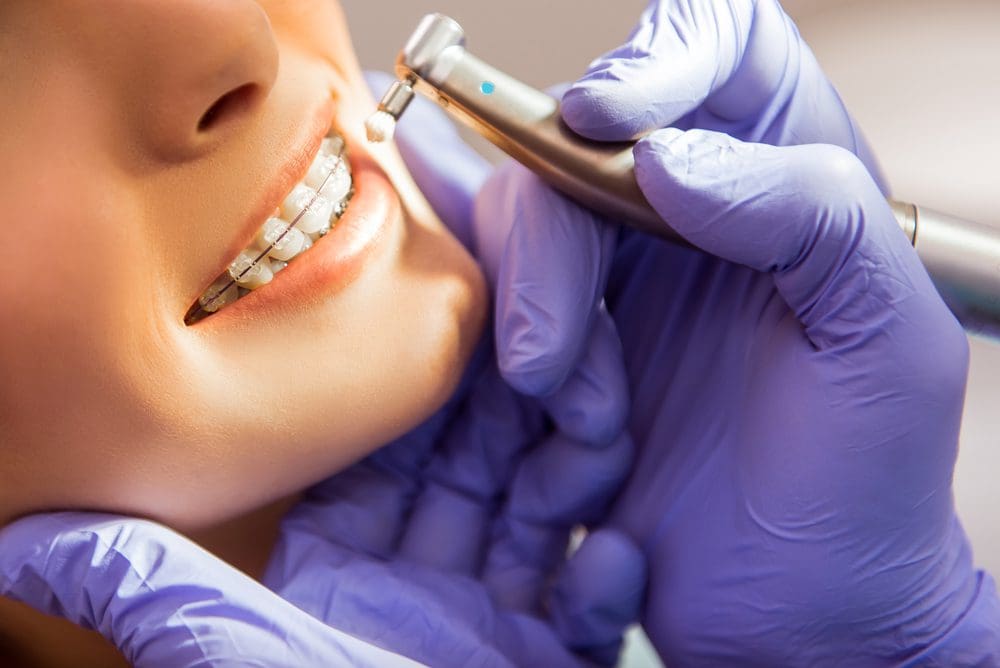The Advantages of Picking a Cumming Orthodontist for Your Braces and Aligners
Wiki Article
Comprehensive Guide to Orthodontics Treatments for Remedying Oral Misalignments
Recognizing the intricacies of each procedure, including their systems, benefits, and potential drawbacks, is important in making notified decisions about one's orthodontic treatment. As we navigate through the thorough overview to orthodontic treatments for dealing with oral imbalances, the complex information of each technique will unfold, shedding light on the course toward a harmonious and practical oral alignment.Orthodontic Procedures Summary

In enhancement to clear aligners and standard braces, orthodontists might also advise various other interventions like headwear, palatal expanders, or retainers to attend to particular placement problems (orthodontist). These treatments are tailored to every patient's special needs and might entail a combination of therapies to accomplish the wanted results. Normal modifications and surveillance are crucial components of orthodontic therapy to guarantee progression is on track and to make any kind of required modifications along the means. By undergoing orthodontic procedures, clients can not just accomplish a straighter grin but also boost their general oral wellness and function.
Traditional Braces: How They Work
When taking into consideration orthodontic treatments for oral misalignments, standard braces stand out as a tried and true approach for fixing teeth placing. Standard braces consist of braces, cables, and bands that work with each other to apply constant pressure on the teeth, slowly moving them into the wanted positioning.
As pressure is applied to the teeth with the braces, the bone surrounding the teeth is reshaped to support the new tooth positions. Clients will need routine modifications at the orthodontist's office to make sure the dental braces proceed to use the right stress for efficient teeth motion.
Unseen Aligners: Disadvantages and pros
These clear, customized trays are essentially unnoticeable when worn, making them an enticing choice for individuals looking for a much more aesthetically pleasing orthodontic therapy. Clients can remove the aligners prior to eating or cleaning their teeth, minimizing the danger of food obtaining stuck in the home appliance and streamlining the cleansing process.
Surgical Orthodontic Options
Surgical treatments in orthodontics existing sensible alternatives for addressing intricate oral imbalances that might not be properly resolved through conventional orthodontic treatments. While invisible aligners porcelain dental veneers and traditional braces can correct many orthodontic concerns, particular instances need surgical intervention to achieve optimum outcomes. Surgical orthodontic choices are usually suggested for severe malocclusions, significant jaw disparities, and instances where the underlying bone structure needs modification to attain appropriate positioning.One common medical orthodontic treatment is orthognathic surgical procedure, which includes repositioning the jaws to correct useful problems such as difficulty speaking or chewing. This surgical treatment is commonly executed in cooperation with an orthodontist who aids line up the teeth prior to and after the procedure. Surgical orthodontics may also involve procedures to reveal impacted teeth, remove excess periodontal cells, or reshape the jawbone to produce a more harmonious face helpful site account.
Before considering medical orthodontic choices, people go through an extensive analysis to determine the necessity and prospective advantages of such interventions. cumming invisalign. While surgical treatment might seem overwhelming, it can substantially boost both the function and appearances of the smile in situations where standard orthodontic treatments fall short
Retainers and Post-Treatment Treatment

Post-treatment treatment involves complying with the orthodontist's directions faithfully. This may include appropriate dental health techniques, attending follow-up appointments, and using the retainers as recommended. Failing to adhere to post-treatment care instructions can result in relapse, where the teeth slowly return in the direction of their initial positions. Constant retainer wear, excellent dental health, and normal oral exams are essential for preserving the results accomplished with orthodontic surgical treatment and making certain the lasting security of the dealt with oral placement.
Conclusion
In final thought, orthodontic treatments use various alternatives for fixing oral misalignments. Surgical orthodontic alternatives are offered for extra serious imbalances. In general, orthodontic treatments can effectively enhance oral health and wellness and visual appearance.As we browse through the detailed overview to orthodontic procedures from this source for remedying dental misalignments, the detailed details of each technique will certainly unfold, dropping light on the course toward a functional and harmonious oral alignment. - cumming invisalign
One of the most common orthodontic therapies is the usage of braces, which are composed of steel brackets and cables that use mild pressure to slowly move teeth into the preferred placement.When considering orthodontic treatments for dental imbalances, typical braces stand out as a reliable method for dealing with teeth positioning. In addition, undetectable aligners may not be appropriate for complex orthodontic concerns that call for more significant teeth activity, as they are generally advised for mild to moderate instances. Retainers are customized orthodontic tools developed to hold teeth in their remedied positions after the conclusion of orthodontic therapy.
Report this wiki page